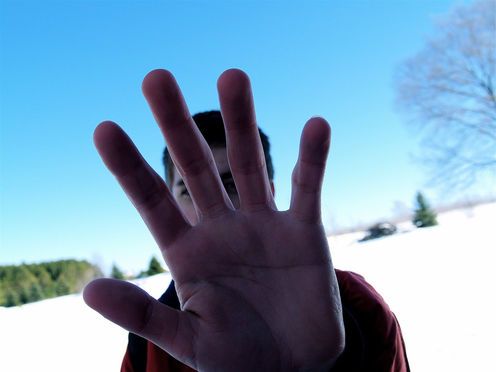
Winter has arrived and with it comes an increased risk of dry, cracked and irritated skin. But have you ever wondered exactly why this happens?
Our skin is literally a water-containing barrier that protects us from our environment. The water content of the skin varies depending on gender, age and where on the body we’re looking at.
Because the skin is porous, water vapour is constantly lost through the skin via evaporation. Water loss occurring under non-sweating conditions is called transepidermal water loss.
Low humidity and windy environments, which is what we are exposed to in winter, accelerate this water loss through the skin. Water loss is further accelerated by direct heat that blows on the skin, which is what happens when we turn on heaters in the car and at home. So, skin often dries out during winter because of the environmental changes we are exposed to and the things we do to try to keep warm.
People sometimes notice that their skin becomes more susceptible to dryness as they age. This is because the water content of the outermost layer of the skin (stratum corneum) decreases with age.
Some studies have also suggested those with dark skin have a higher rate of water loss, meaning people with pigmented skin may have a higher risk of developing dry skin. Those who have a compromised epidermal barrier (such as people who have eczema) also experience increased water loss, making the skin very dry year-round.

While dry skin looks and feels less than desirable, it also increases itchiness and this can trigger eczema. Itching may also result in secondary infection in the skin.
So aside from turning down the heater, what else can you do to avoid dry skin this winter?
-
Turn down the heat. Ideally showers should be cool to tepid and should be kept short (less than three minutes). Long, hot showers might thaw you out in the short term but will eventually dry skin out even more. Turning down the heating is a good idea too so water loss is not accelerated.
-
Avoid soap and use soap-free wash instead. Soap-free washes remove dirt and grime but leave the body’s natural oils behind. Unlike soap, soap-free washes don’t contain strong alkaline solutions that are harsh on our slightly acidic skin.
-
Moisturise your skin at least once a day. Applying moisturiser two to three minutes after your shower will give the best results. Creams hydrate more effectively than lotions. If you have a tendency to develop dry skin, consider applying moisturiser twice a day during the cold months of the year.
-
Use lip balm. Lips are also prone to drying and cracking with winter winds and the cold temperatures, so use lip balm as often as you can instead of licking your lips or pulling off dry skin.
-
Protect your hands with gloves to prevent cracking and drying. Moisturise after each time you wash your hands to replenish the lost moisture.
-
If you are prone to eczema, avoid wearing wool directly against your skin as this can cause irritation that can trigger eczema.
-
Put a humidifier in your room to put humidity back into the air.
While all these methods will help with general dry skin caused by the cold, there are other conditions that can cause dry, cracked skin. Sometimes the tendency for severely dry skin is inherited (called ichthyosis). This results in thick, dry, “fish-like scales” that often require specially formulated moisturisers. Tinea, eczema, psoriasis and even an under-active thyroid gland can also cause dry, itchy skin.
If your skin is extremely red, weeping, oozing or painful, your dry skin could be caused by something more sinister than just general winter water loss and you should see your doctor.
Dr. Michelle Rodrigues is a consultant dermatologist at St. Vincent’s and the Royal Children’s Hospital and is co-founder of the Vitiligo Clinic at the Skin and Cancer Foundation. She also consults in private rooms at Laser Dermatology, Box Hill and Frankston Dermatology.
